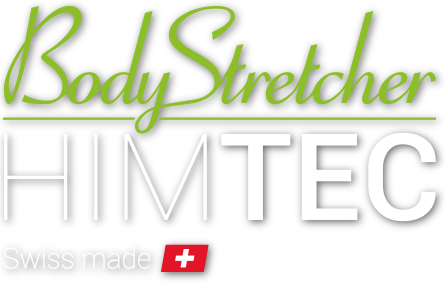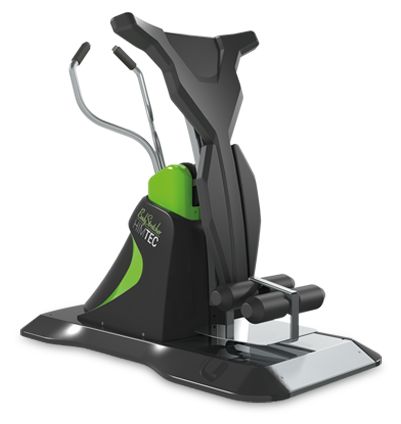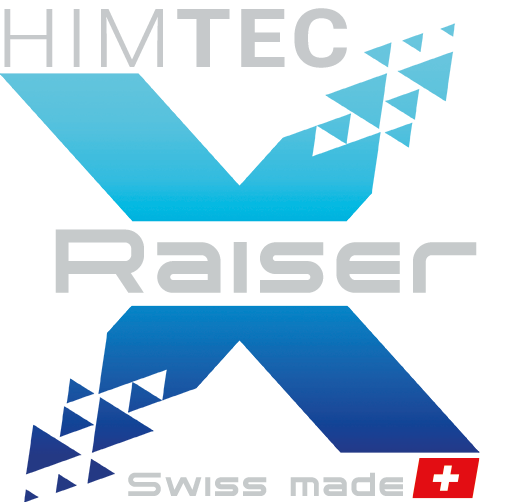This is how the HIMTEC back trainer works
Gravity for back pain
Intervertebral discs - a brilliant invention of nature. Yet they cause problems for many people. The fault lies in forced postures due to sitting or standing for too long. A body stretching device, called a traction table, can help balance the stresses.
Why do intervertebral discs cause us problems?
They are always between two neighboring vertebrae, providing mobility and cushioning the system: the intervertebral discs. What makes each intervertebral disc so special is its elasticity. For this, the spinal buffer needs fluid.
However, the intervertebral discs are not supplied by blood vessels, they are fed exclusively by the fact that they are in motion. Only through constant stress and strain can fluid and nutrients be circulated in the intervertebral discs. But therein lies the problem: most people simply do not move enough. Sitting or standing too long causes permanent compression and stops the exchange of fluid.
Normally, pads can regenerate overnight. But if sleep isn't as good as it should be, it can lead to weak and cracked intervertebral discs: They simply don't absorb enough fluid. They can then bulge and even tear. This can lead to severe pain. A so-called body stretching system helps to alleviate, improve or even reverse this development.
Stretching the body can relieve intervertebral discs.
The intervertebral discs can again fill up with fluid and nutrients if they are given a good resting surface. This can also be done by swimming, provided you choose a swimming style that is gentle on the back. The regeneration is particularly effective when gravity is almost abolished and there is still a stretch at the same time.
This is precisely what a special body stretching system allows. Simply stand on the device, fix your feet or legs and adjust the device to your size. Just like on a seesaw or a swing, you rock forward, flat on your stomach, slowly and in a controlled manner.
This movement must be regulated and controlled by yourself with the help of additional handles or with the help of a trained professional. You can carefully pull yourself forward with the help of the handles until you reach the horizontal position. When tilting forward, the torso and leg padding will spread slightly.
The fact that the feet are held on the floor plate causes a pleasant stretch. The whole body is then in what is called traction. The intervertebral discs, the spinal joints and the short musculature connecting the spine (segmental musculature) are stretched.
In order for the intervertebral discs to rest properly during stretching, the muscles must be as relaxed as possible. If the stretching is counteracted, i.e. if the muscles are contracted, the back muscles are strengthened.
Suitable for prevention and therapy
The body stretching device is ideal for preventing back pain. Especially for those who can hardly leave the sitting position. In addition to the intervertebral discs, the musculature also benefits. It is better irrigated and strengthened. The metabolism is activated and regeneration is accelerated.
Some therapists also use the traction table in therapy. While the patients are led in a relaxed horizontal position and the body is stretched slightly along the spine, they can simultaneously perform other therapeutic measures. The effect of the therapeutic manipulations may even be enhanced. In the supine position, heat therapy or mobilization by a therapist, for example, can have additional positive effects.
It all depends on the dosage
When training on a traction table for the first time, you should take it easy. Beginners start with five minutes. As soon as you get used to it, it's a good idea to go up to 15 minutes. It is important that the stretching is done slowly, carefully and with self-regulation.
However, training with the traction table is not always recommended. Contraindications include, for example:
- pregnancy
- tumor disease
- severe or absolute bone stenosis of the spinal canal
- high level of vertebral instability
- slipped vertebrae of Meyerding grade III and IV
- high level scoliosis
- severe overt osteoporosis with recent vertebral fractures
- infections
- recently operated spine
- implants
- high blood pressure
Simple and safe!
Climb, adjust height, stretch
Thanks to the purely mechanical control, handling is very simple and the control of the stretch is always in your hands. The HIMTEC BodyStretcher promotes the strengthening of the back muscles and helps the intervertebral discs to recover faster.
click on image
To operate the Bodystretcher, first grasp the pad and stand forward between the foot rollers. Then raise or lower the pad to chest level.
click on image
Now grasp the levers with both hands and release the lever lock with the handles. Now pull yourself forward step by step. The stretching process begins with the tilting of the lying surface.
click on image
Position the levers gradually further forward to intensify the stretching (the lying surface moves even further apart). You can now actively relieve and strengthen your back at the strength that is right for you by rocking back and forth.


